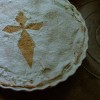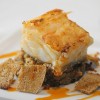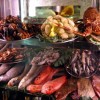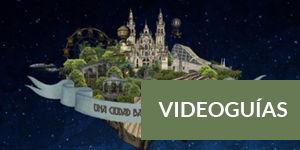- Accede I
- Regístrate I
- carrito
Postres, vinos y licores
Allí no acaban las opciones de la sobremesa. Compostela ha legado a la gastronomía gallega la llamada tarta de Santiago, que en sus 200 años de historia ha sabido combinar las proporciones justas de almendra molida, huevos, azúcar, mantequilla y pizcas de canela debajo de un manto de azúcar en polvo que dibuja la cruz del Apóstol. Si se quiere acabar la comida con quesos las opciones son muchas, porque Santiago está rodeada de buenos productores de quesos, como los de Arzúa-Ulloa, el de O Cebreiro, o el San Simón, puntiagudo y ahumado. Reina entre ellos el queso de tetilla, de sabor suave por su corta maduración, e inconfundible por su forma.
El riego lo aportan vinos procedentes de todos los rincones gallegos. El popular Ribeiro, de la rica zona vitícola de Ourense, es ligero y joven en su versión blanca, y cargado cuando es tinto. De las Rías Baixas llegan el Albariño, fiel compañía del marisco, seguido por los caldos de Tea, Rosal, Ribeira de Ulla y Salnés. También deben catarse los vinos de la Ribeira Sacra -blancos y tintos, encabezados por el histórico Amandi que, dicen, ya era conocido en las mesas de los Césares romanos-; los de Monterrei, que abarcan desde blancos ligeros hasta tintos afrutados de intenso color púrpura, y los de Valdeorras, que nacen también en Ourense, y se reparten entre blancos –Godello- y tintos –Mencía-.
El remate natural de cualquier comilona son los aguardientes u orujos, que pueden tomar forma de licor de hierbas, licor café y muchas más. La caña es también la base de lasqueimadas, que ponen a arder el orujo con azúcar, cáscaras de naranja o limón y granos de café mientras se recita un conjuro contra los maleficios de meigas y trasnos.














